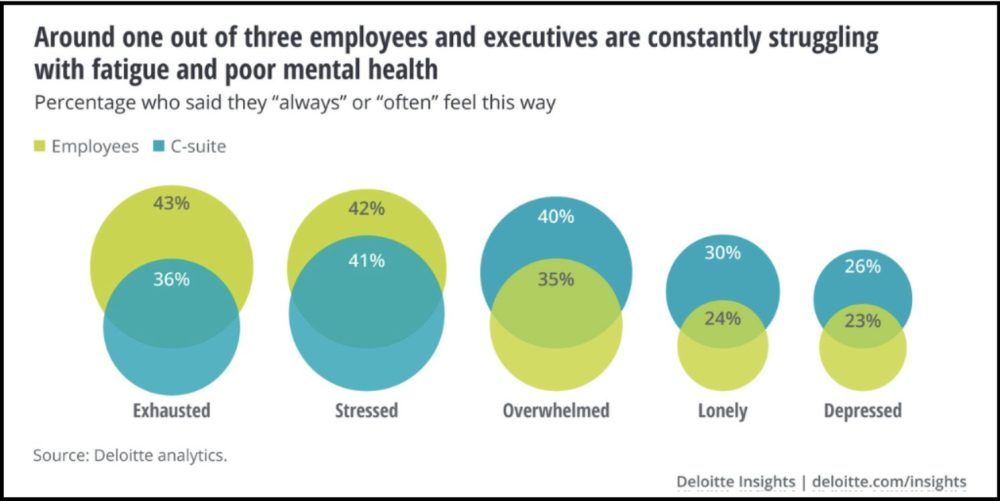 As public relations measurement month came to an end, so too did hurricane season in the United States. While the timing may be a coincidence, hurricanes, and the way they’re measured, offer many lessons for public relations industry measures.Hurricanes are measured using the Saffir-Simpson Wind Scale and broken up into categories – a category one being the mildest and a category five being calamitous. Yet, the categories face annual criticism. They’re used as a measure that tells society how severe a storm is, but the categories are defined by wind speed.As a resident of a hurricane state, many of our most harmful hurricanes have often been category ones. So, why so many harms? The answer is: all the other measures of hurricanes. Other measures include rain totals, speed of the storm (i.e., slow moving storms can often cause more flooding or sustained wind damage), terrain impacted, storm surge, time of day the storm hits (i.e., high tide or low tide), and many other factors. Critics of the current measurement system argue that using only one measure misses the broader picture.Sound familiar?Here are five lessons from hurricanes for PR measures:The Problem of Top-Line MeasuresLike a focus on wind speed, do your top-line measures really tell you much? It’s still quite common to see professionals and clients focus on what may sometimes be telling metrics (like social media followers or likes,) but these measures are also often vanity metrics that don’t tell you many meaningful insights or can be outright misleading.Takeaway: Never stop at top-line or vanity measures.Adding Context Below-the-LineThe next question then becomes: what are your equivalents of metrics like speed of storm and storm surge? Common areas to start are richer ways to measure engagement, reputation, and actual audience behaviors. And remember, every context is different, be it different clients, products, or audiences. For example, are you using the same measures for existing consumers as you are potential customers? The appropriate measures may be very different.Takeaway: Build a robust recipe of measures that tell you a more meaningful story, and this formula should likely vary with different audiences and circumstances.Are you Capturing your Audiences Properly?Is the hurricane hitting major metro areas or less populated areas? The coast or inland? The storm surge in my state of North Carolina will impact the coast in different ways than torrential rain in flood prone inland areas, all with potentially awful harms, but harms that will affect people in different ways. In the PR world, each social media platform has greatly different audiences. Even within a platform, certain personality types are more likely to share opinions than other personality types. Do your measures account for these differences? People will commonly show me their Twitter data only to realize most of their metrics are capturing audiences that are often not relevant for them; conversely, this usually means they may not be capturing their actual audiences much at all.Takeaway: Make sure you are capturing where your audiences are, be they different social media platforms, internal communications channels or alike. Second, make sure the data you have are reflective of the audiences you’re attempting to understand.Are you Capturing all Relevant Times?In hurricane coverage, there is often an issue of attention and time. While storm chasers and weather journalists are often there for the initial impact so they can show the intense rain and wind, much of the damage not only happens in other areas but at different times. In North Carolina, many of the flood prone areas have rivers that reach their peak flooding days and sometimes even weeks later as water funnels and drains. By then, the attention is often long gone but the damage has just begun. Ask yourself: are you overemphasizing or only capturing data from the time of most attention? Think of a crisis. We often focus on the immediacy of data and the initial news, social, or internal chatter cycles. But what is your reputation long-term? What are the effects on your consumers or employees not just today but in the coming months?Takeaway: An often forgotten about consideration, just as you want to capture the diversity of your audiences, you need to make sure your approach to measures considers the context of time.General Trends Still Matter but Change Over TimeDespite the above, this does not mean the broadest of measures are worthless. Just as retailers need to use same-store sales to gauge annual progress, baselines are important to build to track changes and trends. If measuring hurricanes in a flood prone area, comparing even broad measures over time can give implications of impact. But dynamics also change, be they population shifts or advances in water engineering. The same will occur with your PR measures and contexts.Takeaway: Keeping broad measures may still be helpful for trends and comparisons, but be willing to adapt or add to these measures over time to make them more informative as reality changes.
As public relations measurement month came to an end, so too did hurricane season in the United States. While the timing may be a coincidence, hurricanes, and the way they’re measured, offer many lessons for public relations industry measures.Hurricanes are measured using the Saffir-Simpson Wind Scale and broken up into categories – a category one being the mildest and a category five being calamitous. Yet, the categories face annual criticism. They’re used as a measure that tells society how severe a storm is, but the categories are defined by wind speed.As a resident of a hurricane state, many of our most harmful hurricanes have often been category ones. So, why so many harms? The answer is: all the other measures of hurricanes. Other measures include rain totals, speed of the storm (i.e., slow moving storms can often cause more flooding or sustained wind damage), terrain impacted, storm surge, time of day the storm hits (i.e., high tide or low tide), and many other factors. Critics of the current measurement system argue that using only one measure misses the broader picture.Sound familiar?Here are five lessons from hurricanes for PR measures:The Problem of Top-Line MeasuresLike a focus on wind speed, do your top-line measures really tell you much? It’s still quite common to see professionals and clients focus on what may sometimes be telling metrics (like social media followers or likes,) but these measures are also often vanity metrics that don’t tell you many meaningful insights or can be outright misleading.Takeaway: Never stop at top-line or vanity measures.Adding Context Below-the-LineThe next question then becomes: what are your equivalents of metrics like speed of storm and storm surge? Common areas to start are richer ways to measure engagement, reputation, and actual audience behaviors. And remember, every context is different, be it different clients, products, or audiences. For example, are you using the same measures for existing consumers as you are potential customers? The appropriate measures may be very different.Takeaway: Build a robust recipe of measures that tell you a more meaningful story, and this formula should likely vary with different audiences and circumstances.Are you Capturing your Audiences Properly?Is the hurricane hitting major metro areas or less populated areas? The coast or inland? The storm surge in my state of North Carolina will impact the coast in different ways than torrential rain in flood prone inland areas, all with potentially awful harms, but harms that will affect people in different ways. In the PR world, each social media platform has greatly different audiences. Even within a platform, certain personality types are more likely to share opinions than other personality types. Do your measures account for these differences? People will commonly show me their Twitter data only to realize most of their metrics are capturing audiences that are often not relevant for them; conversely, this usually means they may not be capturing their actual audiences much at all.Takeaway: Make sure you are capturing where your audiences are, be they different social media platforms, internal communications channels or alike. Second, make sure the data you have are reflective of the audiences you’re attempting to understand.Are you Capturing all Relevant Times?In hurricane coverage, there is often an issue of attention and time. While storm chasers and weather journalists are often there for the initial impact so they can show the intense rain and wind, much of the damage not only happens in other areas but at different times. In North Carolina, many of the flood prone areas have rivers that reach their peak flooding days and sometimes even weeks later as water funnels and drains. By then, the attention is often long gone but the damage has just begun. Ask yourself: are you overemphasizing or only capturing data from the time of most attention? Think of a crisis. We often focus on the immediacy of data and the initial news, social, or internal chatter cycles. But what is your reputation long-term? What are the effects on your consumers or employees not just today but in the coming months?Takeaway: An often forgotten about consideration, just as you want to capture the diversity of your audiences, you need to make sure your approach to measures considers the context of time.General Trends Still Matter but Change Over TimeDespite the above, this does not mean the broadest of measures are worthless. Just as retailers need to use same-store sales to gauge annual progress, baselines are important to build to track changes and trends. If measuring hurricanes in a flood prone area, comparing even broad measures over time can give implications of impact. But dynamics also change, be they population shifts or advances in water engineering. The same will occur with your PR measures and contexts.Takeaway: Keeping broad measures may still be helpful for trends and comparisons, but be willing to adapt or add to these measures over time to make them more informative as reality changes.
 Dr. Joseph Czabovsky is an Associate Professor at the University of North Carolina at Chapel Hill. His research and professional work focus on PR measurement and strategy, especially as it relates to niche, minority, or micro audiences. He is a member of the Institute of Public Relations’ Measurement Commission and IPR ELEVATE.
...
Dr. Joseph Czabovsky is an Associate Professor at the University of North Carolina at Chapel Hill. His research and professional work focus on PR measurement and strategy, especially as it relates to niche, minority, or micro audiences. He is a member of the Institute of Public Relations’ Measurement Commission and IPR ELEVATE.
...
Read More...

 This blog is provided by the IPR ESG & Purpose Research Library.Honeywell examined the sentiment and progress of Environmental Sustainability (ES) initiatives on a global basis.A survey of 653 professionals directly involved in the planning, strategic development, implementation, or oversight of environmental sustainability goals and initiatives was conducted April 1–Sept. 30, 2022.Key findings include:1.) 65% of professionals surveyed said sustainability goals are one of their company’s top five priorities.— Most organizations said they are prioritizing energy efficiency over other ES initiatives.2.) 50% of organizations plan to increase budgets related to emissions reduction by more than 20% over the coming year.3.) Despite energy evolution and efficiency being the top ES priority, circularity and recycling was the initiative with the most extreme success over the past 12 months (59%).4.) Fewer than half of all organizations said they are “extremely optimistic” about achieving their ES goals over the coming year.— Organizations in Latin America lead all other regions in “extreme optimism” for achieving ES goals.Find the original report here.
...
This blog is provided by the IPR ESG & Purpose Research Library.Honeywell examined the sentiment and progress of Environmental Sustainability (ES) initiatives on a global basis.A survey of 653 professionals directly involved in the planning, strategic development, implementation, or oversight of environmental sustainability goals and initiatives was conducted April 1–Sept. 30, 2022.Key findings include:1.) 65% of professionals surveyed said sustainability goals are one of their company’s top five priorities.— Most organizations said they are prioritizing energy efficiency over other ES initiatives.2.) 50% of organizations plan to increase budgets related to emissions reduction by more than 20% over the coming year.3.) Despite energy evolution and efficiency being the top ES priority, circularity and recycling was the initiative with the most extreme success over the past 12 months (59%).4.) Fewer than half of all organizations said they are “extremely optimistic” about achieving their ES goals over the coming year.— Organizations in Latin America lead all other regions in “extreme optimism” for achieving ES goals.Find the original report here.
... 
 This summary is provided by the IPR Measurement Commission.Muck Rack explored how PR professionals measured success in 2022.A survey of 805 PR professionals was conducted Oct. 11–22, 2022.Key findings include:1.) Respondents said connecting PR metrics to business outcomes (67%) and proving the value of metrics (59%) were the most challenging aspects of measuring PR results in 2022.2.) The most popular measures of success for PR professionals’ earned media efforts in 2022 were:— Coverage/stories placed (96%)— Audience reach (56%)— Social media shares/mentions (52%)3.) Compared to last year, more PR pros are sharing updates with their executive team (6% increase), their marketing team (5% increase), and their entire company (5% increase).Find the original report here.
...
This summary is provided by the IPR Measurement Commission.Muck Rack explored how PR professionals measured success in 2022.A survey of 805 PR professionals was conducted Oct. 11–22, 2022.Key findings include:1.) Respondents said connecting PR metrics to business outcomes (67%) and proving the value of metrics (59%) were the most challenging aspects of measuring PR results in 2022.2.) The most popular measures of success for PR professionals’ earned media efforts in 2022 were:— Coverage/stories placed (96%)— Audience reach (56%)— Social media shares/mentions (52%)3.) Compared to last year, more PR pros are sharing updates with their executive team (6% increase), their marketing team (5% increase), and their entire company (5% increase).Find the original report here.
... 
 Dr. Joseph Czabovsky is an Associate Professor at the University of North Carolina at Chapel Hill. His research and professional work focus on PR measurement and strategy, especially as it relates to niche, minority, or micro audiences. He is a member of the Institute of Public Relations’ Measurement Commission and IPR ELEVATE.
...
Dr. Joseph Czabovsky is an Associate Professor at the University of North Carolina at Chapel Hill. His research and professional work focus on PR measurement and strategy, especially as it relates to niche, minority, or micro audiences. He is a member of the Institute of Public Relations’ Measurement Commission and IPR ELEVATE.
... 
 Future Forum explored how executives are dealing with the strain of leading in the “new normal.”A survey of 10,766 workers in the U.S., Australia, France, Germany, Japan, and the U.K. was conducted Aug. 3-21, 2022.Key findings include:1.) Burnout rose to 40% this quarter globally—an 8% rise from May—with the most significant increase in the U.S.— Women experienced 32% more burnout than men in the same roles.2.) Workers who have full schedule flexibility reported 29% higher productivity and 53% greater ability to focus than workers with no ability to shift their schedule.3.) Remote and hybrid workers were 52% more likely to say their company culture had improved over the past two years compared to fully in-person workers.— Many workers cited flexible remote work policies as the primary reason their culture is changing for the better.4.) People who are burned out feel far less connected to their companies and report being three times more “likely” or “very likely” to look for a new job in the coming year.Find the original report here.
...
Future Forum explored how executives are dealing with the strain of leading in the “new normal.”A survey of 10,766 workers in the U.S., Australia, France, Germany, Japan, and the U.K. was conducted Aug. 3-21, 2022.Key findings include:1.) Burnout rose to 40% this quarter globally—an 8% rise from May—with the most significant increase in the U.S.— Women experienced 32% more burnout than men in the same roles.2.) Workers who have full schedule flexibility reported 29% higher productivity and 53% greater ability to focus than workers with no ability to shift their schedule.3.) Remote and hybrid workers were 52% more likely to say their company culture had improved over the past two years compared to fully in-person workers.— Many workers cited flexible remote work policies as the primary reason their culture is changing for the better.4.) People who are burned out feel far less connected to their companies and report being three times more “likely” or “very likely” to look for a new job in the coming year.Find the original report here.
... 
 Deloitte examined how executives go beyond workplace wellness to workplace well-being—for themselves and their people.A survey of 1,050 c-suite executives and 1,050 employees was conducted Feb. 8-21, 2022.Key findings include:— 56% of employees said their company’s executives care about their well-being, while 91% of the C-suite said their employees believe they care about it.— 68% of the C-suite admitted that they aren’t taking enough action to safeguard employee and stakeholder health.— 55% of employees and 77% of executives said they believe companies should be required to publicly report their workforce well-being metrics.— 57% of employees said they are seriously considering quitting for a more supportive job, and nearly 7-in-10 executives said they are thinking about going the same.— Less than 6-in-10 employees said their company integrates well-being into the workplace culture and people’s jobs.
Deloitte examined how executives go beyond workplace wellness to workplace well-being—for themselves and their people.A survey of 1,050 c-suite executives and 1,050 employees was conducted Feb. 8-21, 2022.Key findings include:— 56% of employees said their company’s executives care about their well-being, while 91% of the C-suite said their employees believe they care about it.— 68% of the C-suite admitted that they aren’t taking enough action to safeguard employee and stakeholder health.— 55% of employees and 77% of executives said they believe companies should be required to publicly report their workforce well-being metrics.— 57% of employees said they are seriously considering quitting for a more supportive job, and nearly 7-in-10 executives said they are thinking about going the same.— Less than 6-in-10 employees said their company integrates well-being into the workplace culture and people’s jobs.
 Find the original report here.
...
Find the original report here.
... 
 This blog is provided by the IPR Measurement Commission. Earned media is often challenging to measure for impact – especially compared to other communication methods with more clear attribution, such as advertising.For decades, PR professionals have used various methods to show the relationship between consumer exposure to positive brand news and changes in behavior. Researchers have historically turned to perceived authenticity and organic appeal to defend PR investment, but quantifying these efforts is much more challenging, particularly relative to advertising.The Challenge of Showing PR ValueWhile some early studies weren’t able to demonstrate earned media’s credibility compared to advertising, more recent studies – such as O’Neil, Eisenmann and Holman’s 2019 qualitative research – clearly show that people find earned media more credible and authentic. That’s especially so when the journalist is independent, balanced, and credentialed.We’ve seen several different approaches and attempts to communicate the value of PR-driven news by mirroring advertising metrics, and sometimes multiplying these metrics. These efforts often prove unsuccessful, however, as they typically result in numbers and dollar values that don’t necessarily equate to actual impact. This only reiterates the challenge of showing the value of PR compared to advertising.As a result of this challenge, PR activities have focused on top-of-the-funnel metrics such as awareness, and marketing budgets have been highly skewed toward advertising. The result has been lower overall investment in PR: In 2020, ad agencies earned almost four times the revenue of PR agencies.New Study Shows PR Value Through Lower-Funnel ImpactA more recent quantitative study (p. 60) I conducted earlier this year challenges this financial distribution, illustrating that PR influences lower-funnel metrics not just as well as advertising, but even more effectively.The study shows that exposure to positive news spurred by PR activities has a greater influence on purchase intent than advertising – a finding that directly supports increased budgets for PR where brands could see a higher return. Based on a survey of nearly 50,000 responses, the study also shows that news exposure had a six-percentage point advantage over ad exposure – and that the combination of news and ads had a 14-percentage point lift over ads only.This confirms that PR exposure not only has a stronger impact on purchase intent than ad exposure alone, but that their impact can grow exponentially when combined. The study also found that positive news exposure results in higher lift across brand health measures and word of mouth, with PR’s influence on purchase intent two times greater than advertising.This same approach could be applied to specific brands or campaigns to show the value of PR work in relation to a behavior-predicting metric – purchase intent.Brand Lift Studies to Measure Purchase IntentBrand lift studies are an excellent method of measuring campaign effectiveness and purchase intent. These studies survey audiences exposed or engaged with a particular brand or campaign, comparing their perceptions to other groups that aren’t exposed. The goal is to show that those who are exposed have more awareness or a better perception of the brand.These surveys often include questions about past purchases and purchase intent to show that those exposed to the campaign or brand content are more likely to buy. Brand lift studies can also be used to show an increase in purchase intent over time with exposed audiences. Surveys are a tried-and-true method of uncovering customer perceptions, including purchase intent, that can show the value of PR efforts.Social Conversation Analysis for Purchase IntentSocial conversation analysis is another way of measuring purchase intent around initiatives such as influencer campaigns. This method involves looking at engagement on all influencer posts, then diving deeper to analyze the content while scanning for words or topics that indicate intent. Examples of this kind of language include: “I have to have it—I’m going to buy this product right now!
This blog is provided by the IPR Measurement Commission. Earned media is often challenging to measure for impact – especially compared to other communication methods with more clear attribution, such as advertising.For decades, PR professionals have used various methods to show the relationship between consumer exposure to positive brand news and changes in behavior. Researchers have historically turned to perceived authenticity and organic appeal to defend PR investment, but quantifying these efforts is much more challenging, particularly relative to advertising.The Challenge of Showing PR ValueWhile some early studies weren’t able to demonstrate earned media’s credibility compared to advertising, more recent studies – such as O’Neil, Eisenmann and Holman’s 2019 qualitative research – clearly show that people find earned media more credible and authentic. That’s especially so when the journalist is independent, balanced, and credentialed.We’ve seen several different approaches and attempts to communicate the value of PR-driven news by mirroring advertising metrics, and sometimes multiplying these metrics. These efforts often prove unsuccessful, however, as they typically result in numbers and dollar values that don’t necessarily equate to actual impact. This only reiterates the challenge of showing the value of PR compared to advertising.As a result of this challenge, PR activities have focused on top-of-the-funnel metrics such as awareness, and marketing budgets have been highly skewed toward advertising. The result has been lower overall investment in PR: In 2020, ad agencies earned almost four times the revenue of PR agencies.New Study Shows PR Value Through Lower-Funnel ImpactA more recent quantitative study (p. 60) I conducted earlier this year challenges this financial distribution, illustrating that PR influences lower-funnel metrics not just as well as advertising, but even more effectively.The study shows that exposure to positive news spurred by PR activities has a greater influence on purchase intent than advertising – a finding that directly supports increased budgets for PR where brands could see a higher return. Based on a survey of nearly 50,000 responses, the study also shows that news exposure had a six-percentage point advantage over ad exposure – and that the combination of news and ads had a 14-percentage point lift over ads only.This confirms that PR exposure not only has a stronger impact on purchase intent than ad exposure alone, but that their impact can grow exponentially when combined. The study also found that positive news exposure results in higher lift across brand health measures and word of mouth, with PR’s influence on purchase intent two times greater than advertising.This same approach could be applied to specific brands or campaigns to show the value of PR work in relation to a behavior-predicting metric – purchase intent.Brand Lift Studies to Measure Purchase IntentBrand lift studies are an excellent method of measuring campaign effectiveness and purchase intent. These studies survey audiences exposed or engaged with a particular brand or campaign, comparing their perceptions to other groups that aren’t exposed. The goal is to show that those who are exposed have more awareness or a better perception of the brand.These surveys often include questions about past purchases and purchase intent to show that those exposed to the campaign or brand content are more likely to buy. Brand lift studies can also be used to show an increase in purchase intent over time with exposed audiences. Surveys are a tried-and-true method of uncovering customer perceptions, including purchase intent, that can show the value of PR efforts.Social Conversation Analysis for Purchase IntentSocial conversation analysis is another way of measuring purchase intent around initiatives such as influencer campaigns. This method involves looking at engagement on all influencer posts, then diving deeper to analyze the content while scanning for words or topics that indicate intent. Examples of this kind of language include: “I have to have it—I’m going to buy this product right now! 
 ”, “Can’t wait to get my hands on this new product!
”, “Can’t wait to get my hands on this new product!  ”, and “I’m definitely going to buy this!
”, and “I’m definitely going to buy this! 
 ”.This approach can help identify which types of posts or influencers generate not only the highest engagement numbers, but also the most purchase intent.Just as we’ve shown the value of PR over advertising on lower-funnel metrics, we can use purchase intent to show the value of PR campaigns and ongoing coverage through brand lift surveys and social media analysis.Purchase intent can be deployed as a powerful metric to show value among other attribution approaches that move us closer to effectively measuring PR success – making a compelling argument for increased investment in PR by large organizations.
”.This approach can help identify which types of posts or influencers generate not only the highest engagement numbers, but also the most purchase intent.Just as we’ve shown the value of PR over advertising on lower-funnel metrics, we can use purchase intent to show the value of PR campaigns and ongoing coverage through brand lift surveys and social media analysis.Purchase intent can be deployed as a powerful metric to show value among other attribution approaches that move us closer to effectively measuring PR success – making a compelling argument for increased investment in PR by large organizations.
 Angela Dwyer is Head of Insights at Fullintel, IPR Measurement Commission member and IPRRC board member. She is an award-winning, media measurement expert who helps brand improve business results through data-driven, actionable insights.
...
Angela Dwyer is Head of Insights at Fullintel, IPR Measurement Commission member and IPRRC board member. She is an award-winning, media measurement expert who helps brand improve business results through data-driven, actionable insights.
... 


 This blog is provided by the IPR Measurement Commission in celebration of its 25th Anniversary and AMEC’s Measurement Month.It’s hard to imagine 2004. I joined The Goodyear Tire & Rubber Company a year earlier and attended the “Summit on Measurement” in New Hampshire for the first time. I met Katie Paine, Dr. Don Wright, and countless other people giving their time and effort to the Institute for PR to bridge the gap between the public relations profession and its research base.The days passed in a blur as I learned about how PR could be measured. At the time, I believed what people had told me: PR can’t be measured. It’s an art. It’s never going to be taken seriously like marketing is. It’s a “nice to have.”Those tales were especially applied to employee communication. Employee communication is “a warm fuzzy for employees,” not a serious, strategic discipline (as a General Counsel once told me), and certainly not as important as media relations. The Summit caused me not just to revisit those tropes, but to believe exactly the opposite.I cornered Dr. Don Wright about how the Summit had really inspired me and asked how I could get involved with the organization. By December 15, I was elected by the IPR Measurement Commission to join its ranks. In short order, I was rubbing elbows with people whose work I had read.At first, I was intimidated. I was relatively new in public relations and had just started at Goodyear following years at KeyBank and a small agency. Measurement was so new to me. How could I possibly contribute to the organization? The Commission embraced me and nurtured my intellect. I launched a research project at Goodyear and published the results. I did small projects, like looking into how companies were using social media and published those (both of these studies were in partnership with Dr. Julie O’Neil, current chair of the IPR Measurement Commission!) I got bit by the research and measurement bug big time.I moved on to the regional powerhouse National City Bank and continued researching, measuring, and publishing. This was during the 2008 financial crisis, and my measurement plans expanded to examining the impact of unpaid media on direct mail performance, quantifying the tone and volume of negative and positive PR on the perception of risk, and advising the CCO on projects to counter negative coverage.I became a consultant, with the measurement at the heart of strategy, and now I’m a teaching professor at BGSU.All of that is only possible because of that conversation with Don Wright some 18 years ago. The IPR Measurement Commission has meant so much to me personally and professionally. Gee, it only meant the discovery of my life’s work!Congratulations, Measurement Commission!
This blog is provided by the IPR Measurement Commission in celebration of its 25th Anniversary and AMEC’s Measurement Month.It’s hard to imagine 2004. I joined The Goodyear Tire & Rubber Company a year earlier and attended the “Summit on Measurement” in New Hampshire for the first time. I met Katie Paine, Dr. Don Wright, and countless other people giving their time and effort to the Institute for PR to bridge the gap between the public relations profession and its research base.The days passed in a blur as I learned about how PR could be measured. At the time, I believed what people had told me: PR can’t be measured. It’s an art. It’s never going to be taken seriously like marketing is. It’s a “nice to have.”Those tales were especially applied to employee communication. Employee communication is “a warm fuzzy for employees,” not a serious, strategic discipline (as a General Counsel once told me), and certainly not as important as media relations. The Summit caused me not just to revisit those tropes, but to believe exactly the opposite.I cornered Dr. Don Wright about how the Summit had really inspired me and asked how I could get involved with the organization. By December 15, I was elected by the IPR Measurement Commission to join its ranks. In short order, I was rubbing elbows with people whose work I had read.At first, I was intimidated. I was relatively new in public relations and had just started at Goodyear following years at KeyBank and a small agency. Measurement was so new to me. How could I possibly contribute to the organization? The Commission embraced me and nurtured my intellect. I launched a research project at Goodyear and published the results. I did small projects, like looking into how companies were using social media and published those (both of these studies were in partnership with Dr. Julie O’Neil, current chair of the IPR Measurement Commission!) I got bit by the research and measurement bug big time.I moved on to the regional powerhouse National City Bank and continued researching, measuring, and publishing. This was during the 2008 financial crisis, and my measurement plans expanded to examining the impact of unpaid media on direct mail performance, quantifying the tone and volume of negative and positive PR on the perception of risk, and advising the CCO on projects to counter negative coverage.I became a consultant, with the measurement at the heart of strategy, and now I’m a teaching professor at BGSU.All of that is only possible because of that conversation with Don Wright some 18 years ago. The IPR Measurement Commission has meant so much to me personally and professionally. Gee, it only meant the discovery of my life’s work!Congratulations, Measurement Commission!
 Sean D. Willliams is a member of the IPR Measurement Commission and an Assistant Teaching Professor at Bowling Green State University.
...
Sean D. Willliams is a member of the IPR Measurement Commission and an Assistant Teaching Professor at Bowling Green State University.
... 
